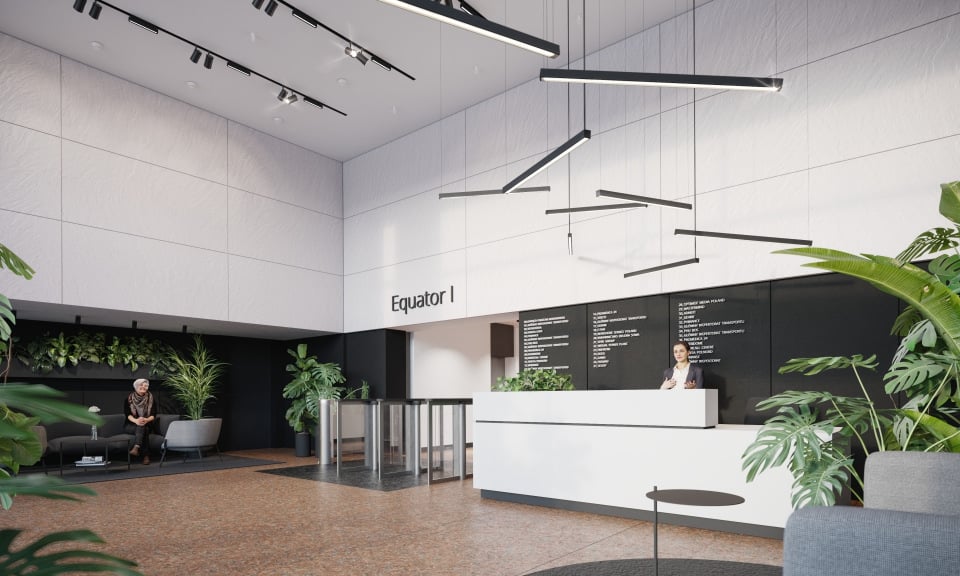In the next two years, the capital cities of Central European countries (Prague, Bratislava, Budapest, and Bucharest) could encounter an office shortage due to delayed construction caused by an uncertain economic outlook combined with high costs and slowing demand.
By the close of Q3 2023, the total area of modern offices in Prague increased to 3.910 million sqm. From the beginning of 2023, 98,400 sqm of office space was completed, and by year-end, an additional 6,400 sqm in one project is expected to be delivered. At the end of September, approximately 85,800 sqm of office space was under construction with planned completion in 2023 and 2024. No construction of any new administrative buildings in Prague was started. The total demand dropped by 34 percent year-on-year, and renegotiations accounted for 50 percent. Compared to its CEE peers, Prague is enjoying the lowest vacancy rate standing at 7.4 percent at the end of Q3 2023. In terms of rent, Prague has the highest prime rents across the region.
Milan Kilík, Head of the Office Agency in Prague at iO Partners, commented: “We can see a lot of differences in the local markets. While some Landlords benefit from a modern project at most wanted locations and use the indexation to their benefit, the others with older buildings and distant locations are struggling with attracting and retaining tenants and have to offer incentives at a higher cost to increase the interest in their building. Tenants in distant areas are price-sensitive, impacting demand and raising concerns about vacancies. With limited stock to be delivered to the market in the upcoming year, it is most probable that the rents will not be lower but climb to even higher levels from what we see today. The tenants who will act now and have a good representative will thus benefit from the situation.”
If we look at the CEE market more closely, year-on-year, there was a decrease in gross take-up in Prague (by 34 percent) and Bratislava (by 23 percent), whereas it rose in Budapest (by 34 percent) and Bucharest (by 95 percent). A higher level of renegotiations is happening across the region. To some extent, it is a cyclical development as the contracts from strong take-up in previous years come to an end, which was the case in Bucharest and Budapest. Moreover, the combination of high relocation expenses and costly fit-outs is compelling tenants to renegotiate their agreements within their current spaces more frequently, as experienced in the Prague market.
All four markets featuring modern office real estate experienced a year-on-year increase in vacancy rates, with Prague showing the lowest vacancy rate (7.4 percent), while Bucharest had the highest percentage of unoccupied offices at 14.5 percent. The vacancy rate in Bratislava and Budapest surpassed 13 percent in the third quarter of 2023.
Elevated construction costs and the unfavourable economic situation in Europe are impacting the future development of new offices across much of the region. More precisely, in Prague and Bratislava in 2025, there’s an anticipation of insufficient availability of new office space, with the Prague office market witnessing no new office development launch in the last 15 months. This might result in demand overweighting the supply situation, leading to upward pressure on rental prices and heightened competition among tenants.
In Bratislava, the saturated office market is another factor that is influencing the development pipeline. Based on the latest figures there is no new office building to be delivered in 2024 and for 2025 currently, there is to date only 10,000 sqm under construction. In the years 2026 and 2027, the supply will begin to approach the 10-year average, which is at 60,000 sqm. A relatively weak pipeline will benefit newly completed offices, which currently have higher vacancy rates.
In Bucharest, low net take-up, subleases due to hybrid work adjustments and high vacancy rates are the main factors constraining new construction. Other factors valid across CEE include expensive construction, high-interest rates, and overall economic uncertainty.
A deviation from this prevailing trend is observed in the Budapest office market, where there is presently an ongoing construction of nearly 280,000 sqm scheduled for completion by 2026. Notably, 170,000 sqm of this space is slated for delivery in 2024. It is crucial to acknowledge that, despite the heightened construction activity in Budapest surpassing that of Prague, Bratislava, and Bucharest, there is an overall downward trajectory in construction activity in Budapest. Since 2019, Budapest has consistently maintained the highest volume of buildings under construction in the region. Similar to Prague, Bratislava, and Bucharest, Budapest is also experiencing a decline in development activity. However, due to the elevated base of the pipeline, the present volume in Budapest remains comparatively higher. Nevertheless, it is reassuring to note that over 40 percent of the projected 2024 pipeline is already pre-leased. This provides confidence that the vacancy rate is not likely to escalate rapidly in Budapest.
| Capital |
Total stock Q3 (sqm) |
Gross-take up Q1-Q3 2023 (sqm) |
Renegotiations Q1-Q3 2023 (%) |
Average vacancy rate Q3 (%) |
Prime rent (EUR/sqm/month) |
| Prague |
3,910 mil. |
361,300 |
50 |
7.4 |
27.0 |
| Bratislava |
2,069 mil. |
136,600 |
35 |
13.8 |
17.5 |
| Budapest |
4,345 mil. |
329,900 |
47 |
13.2 |
25.0 |
| Bucharest |
3,420 mil. |
292,600 |
55 |
14.5 |
22.0 |
Blanka Vačkova, Head of Research at iO Partners, Czech Republic, concluded: “CEE office markets are currently facing a problem of slowing net demand which is stemming from higher rental and fit-out costs, adjustments to hybrid work and overall economic uncertainty. Another challenge is postponing new construction. Even though the CEE markets have registered an increase in office rents over the last years, the high cost of finance and construction, combined with rising yields deteriorated the economic side of the project to the extent that it is not feasible to commence the construction of new offices. The high vacancy rate, which stands in three CEE capitals except for Prague above 13 percent, is another factor adding to the overall caution. The only market that is moving in a different cycle in terms of development is Budapest registering an ongoing strong construction activity. In Prague, Bratislava, Bucharest or Warsaw, the current levels of development are very much below pre-Covid years. Specifically in Prague, we can expect a lack of new modern offices in the upcoming years.”







